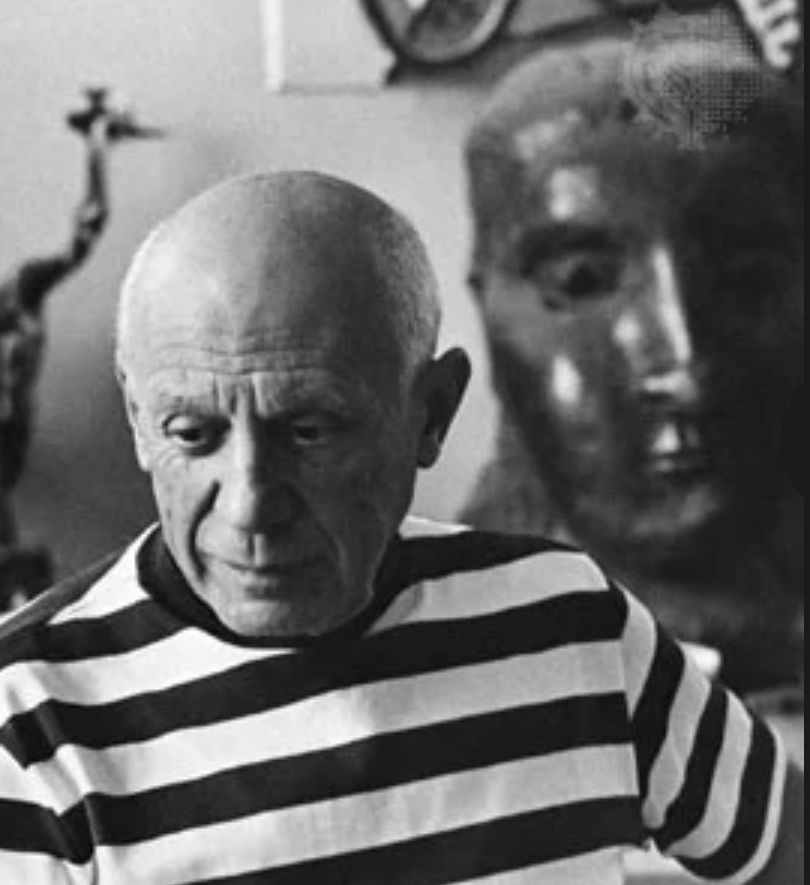Pablo Picasso is probably the most important figure of the 20th century, in terms of art, and art movements that occurred over this period. Before the age of 50, the Spanish born artist had become the most well-known name in modern art, with the most distinct style and eye for artistic creation. There had been no other artists, prior to Picasso, who had such an impact on the art world, or had a mass following of fans and critics alike, as he did.
Pablo Picasso was born in Spain in 1881, and was raised there before going on to spend most of his adult life working as an artist in France. Throughout the long course of his career, he created more than 20,000 paintings, drawings, sculptures, ceramics and other items such as costumes and theater sets. He is universally renowned as one of the most influential and celebrated artists of the twentieth century. Picasso’s ability to produce works in an astonishing range of styles made him well respected during his own lifetime. After his death in 1973 his value as an artist and inspiration to other artists has only grown. He is without a doubt destined to permanently etch himself into the fabric of humanity as one of the greatest artists of all time. As an artist and an innovator, he is responsible for co-founding the entire Cubist movement alongside Georges Braque. Cubism was an avant-garde art movement that changed forever the face of European painting and sculpture while simultaneously affecting contemporary architecture, music and literature. Subjects and objects in Cubism are broken up into pieces and re-arranged in an abstract form. During the period from approximately 1910-1920 when Picasso and Braque were laying the foundation for Cubism in France, its effects were so far-reaching as to inspire offshoots like the styles of Futurism, Dada, and Constructivism in other countries. Picasso is also credited with inventing constructed sculpture and co-inventing the collage art style. He is also regarded as one of three artists in the twentieth century credited with defining the elements of plastic arts. This revolutionary art form led society toward societal advances in painting, sculpture, printmaking and ceramics by physically manipulating materials that had not previously been carved or shaped. These materials were not just plastic, they were things that could be molded in some way, usually into three dimensions. Artists used clay, plaster, precious metals, and wood to create revolutionary sculptural artwork the world had never seen before.
Art is a lie that makes us realize the truth.” – Pablo Picasso
Picasso’s Early Life
Picasso was born in Malaga, Spain, to Don Jose Ruiz y Blasco and Maria Picasso y Lopez. His baptized name is much longer than the Pablo Picasso, and in traditional Andalusian custom honored several saints and relatives. His father was a painter and a professor of art, and was impressed by his son’s drawing from an early age. His mother stated at one time that his first words were to ask for a pencil. At the age of seven Picasso begin receiving formal training from his father. Because of his traditional academic training, Ruiz believed training consisted of copying of masterworks and drawing the human form from live figure-models and plaster casts.
In 1891 at ten years old, the family moved to A Coruna where School of Fine Arts hired Ruiz to be a professor. They spent four years there where Ruiz felt his son surpassed him as an artist at the age of 13 and reportedly vowed to give up painting. Though paintings by Ruiz still seem to have been generated years later, Picasso’s father certainly felt humbled by his son’s natural skill and technique. Picasso and his family were horrified when his seven-year-old sister died of diphtheria in 1895. They relocated to Barcelona and Ruiz began working at its School of Fine Arts. He persuaded officials there to let his son take an entrance exam for an advanced class and Picasso was admitted at the age of just 13. At the age of 16 he was sent to Spain’s foremost art school in Madrid, the Royal Academy of San Fernando. Picasso disliked the formal instructions and decided to stop attending his classes soon after he arrived. He filled his days inside Madrid’s Prado, which displayed paintings such as Francisco Goya and El Greco.
The body of work Picasso created throughout his lifetime is enormous and spans from his early childhood years until his death, creating a more comprehensive record of his development than perhaps any other artist. When examining the records of his early work there is said to be a shift where the child-like quality of his drawings vanished, therefore being the official beginning of his career. That date is said to be 1894, when Picasso was just 13. At the age of 14, he painted Portrait of Aunt Pepa, a striking depiction that has been referred to as one of the best portraits in Spanish history. And at age 16, Picasso created his award-winning Science and Charity.
His technique for realism, so ingrained by his father and his childhood studies, evolved with his introduction to symbolist influences. It led Picasso to develop his own take on modernism, and then to make his first trip to Paris, France. The poet Max Jacob, a Parisian friend, taught Picasso French. They shared an apartment where they experienced the true meaning of what it meant to be a “starving artist.” They were cold and in poverty, burning their own work to keep the apartment warm.
Picasso would predominately spend his working adult life in France. His work has been divided roughly by periods of time in which he would fully develop complex themes and feelings to create a unifying body of work.
Every act of creation is first of all an act of destruction.” – Pablo Picasso
African Influence (1907-1909)
For Picasso, the seminal moment was the Paul Cezanne retrospective held at the Salon d’Automne, one year after the artist’s death in 1906. Though he previously had been familiar with Cezanne, it was not until the retrospective that Picasso experienced the full impact of his artistic achievement. In Cezanne’s works, Picasso found a model of how to distill the essential from nature in order to achieve a cohesive surface that expressed the artist’s singular vision. At about the same time, the aesthetics of traditional African sculpture became a powerful influence among European artists. In France, Henri Matisse, Pablo Picasso, and their School of Paris friends start blending the highly stylized treatment of the human figure in African sculptures with painting styles derived from the post-Impressionist works of Cezanne and Gauguin.
Les Demoiselles d’Avignon was Picasso’s first masterpiece. The painting depicts five naked women with figures composed of flat, splintered planes and faces inspired by Iberian sculpture and African masks. The compressed space the figures inhabit appears to project forward in jagged shards; a fiercely pointed slice of melon in the still life of fruit at the bottom of the composition teeters on an impossibly upturned tabletop. In this painting, Picasso makes a radical departure from traditional European painting by adaptation of Primitivism and abandonment of perspective in favor of a flat, two-dimensional picture plane.

